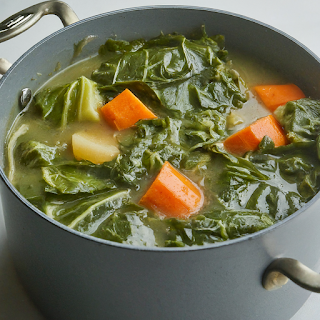Collard greens are a type of leafy green vegetable commonly used in Southern U.S. cuisine, as well as in various cuisines around the world. Here are some comprehensive facts about collard greens:
Botanical Facts
Scientific Name: Brassica oleracea var. viridis
Family: Brassicaceae (Mustard family)
Related to: Kale, broccoli, Brussels sprouts, and cabbage
Description
Appearance: Collard greens have large, dark green, fan-like leaves with tough stems. The leaves are smooth in texture.
Growth: They grow as a biennial plant but are typically cultivated as an annual. They can grow up to 2 to 3 feet tall.
Nutritional Profile
Calories: Low in calories, with about 49 calories per cup of cooked collard greens.
Vitamins and Minerals: Rich in vitamins A, C, K, and folate. High in calcium, iron, magnesium, phosphorus, potassium, and dietary fiber.
Phytochemicals: Contains glucosinolates, which have been shown to have cancer-fighting properties.
Health Benefits
Antioxidants: High in antioxidants, which help fight oxidative stress and inflammation.
Bone Health: High vitamin K content supports bone health and blood clotting.
Digestive Health: High in fiber, aiding in digestion and promoting gut health.
Heart Health: May help lower cholesterol levels and reduce the risk of heart disease.
Culinary Uses
Southern Cuisine: A staple in Southern U.S. cooking, often cooked with ham hocks, bacon, or other smoked meats.
Preparation: Typically simmered or braised for long periods to soften the tough leaves.
Versatility: Can be used in soups, stews, and stir-fries, or eaten raw in salads when young and tender.
Growing Conditions
Climate: Prefer cooler weather and can tolerate frost. They are often grown as a fall or winter crop.
Soil: Thrive in well-drained, fertile soil with a pH between 6.5 and 6.8.
Watering: Require consistent moisture but not waterlogged conditions.
Cultural Significance
African American Cuisine: Integral part of African American culinary traditions, often associated with prosperity and good luck when eaten on New Year's Day.
Global Cuisine: Used in various forms around the world, including in Brazilian, Portuguese, and Ethiopian dishes.
Varieties
Common Varieties: Georgia, Morris Heading, Vates, Champion, and Flash.
Historical Background
Origin: Likely originated in the eastern Mediterranean region, domesticated around 5,000 years ago.
Introduction to the Americas: Brought to the Americas by European settlers and African slaves, becoming a crucial part of Southern cuisine.
Fun Facts
Cooking Tradition: In the Southern U.S., the liquid left after boiling collard greens is known as "pot liquor" or "potlikker" and is rich in vitamins and minerals.
Longevity: Can be harvested multiple times; leaves can be picked as they mature, allowing the plant to continue producing.
These facts provide a comprehensive overview of collard greens, covering their botanical characteristics, nutritional benefits, culinary uses, growing conditions, cultural significance, and more.





No comments:
Post a Comment